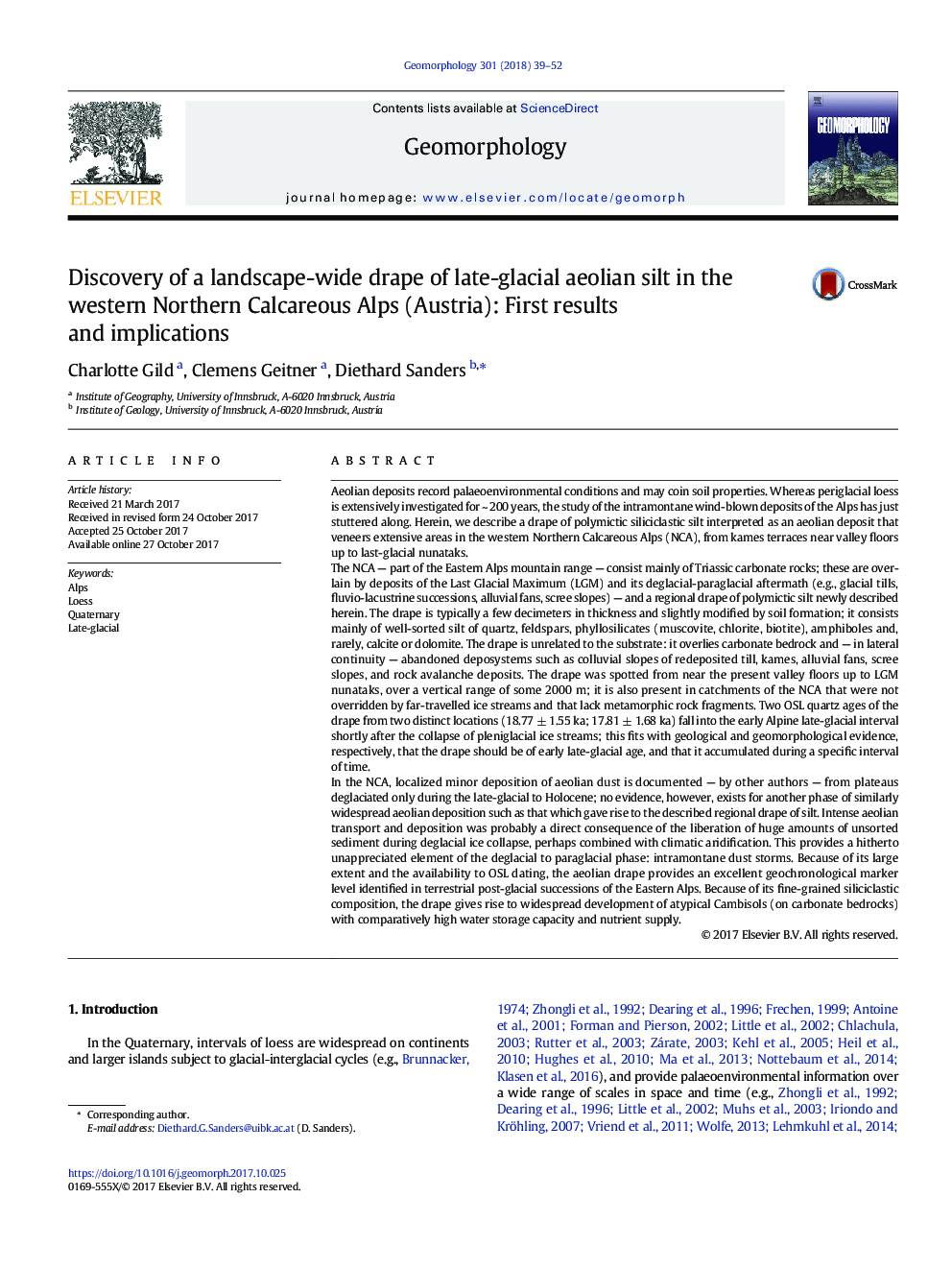| Article ID | Journal | Published Year | Pages | File Type |
|---|---|---|---|---|
| 8908275 | Geomorphology | 2018 | 14 Pages |
Abstract
In the NCA, localized minor deposition of aeolian dust is documented - by other authors - from plateaus deglaciated only during the late-glacial to Holocene; no evidence, however, exists for another phase of similarly widespread aeolian deposition such as that which gave rise to the described regional drape of silt. Intense aeolian transport and deposition was probably a direct consequence of the liberation of huge amounts of unsorted sediment during deglacial ice collapse, perhaps combined with climatic aridification. This provides a hitherto unappreciated element of the deglacial to paraglacial phase: intramontane dust storms. Because of its large extent and the availability to OSL dating, the aeolian drape provides an excellent geochronological marker level identified in terrestrial post-glacial successions of the Eastern Alps. Because of its fine-grained siliciclastic composition, the drape gives rise to widespread development of atypical Cambisols (on carbonate bedrocks) with comparatively high water storage capacity and nutrient supply.
Keywords
Related Topics
Physical Sciences and Engineering
Earth and Planetary Sciences
Earth-Surface Processes
Authors
Charlotte Gild, Clemens Geitner, Diethard Sanders,
